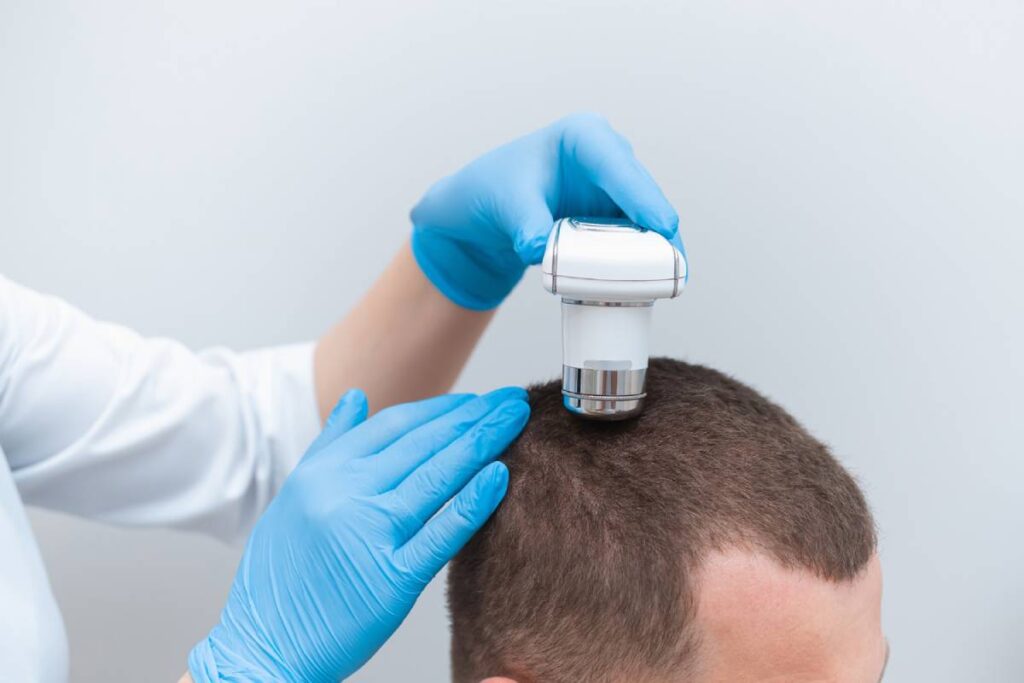Understanding the Basics of Hair Transplantation
A hair transplantation procedure is a surgical technique used to address hair loss, typically on the scalp, by transplanting hair follicles from one part of the body to another. This procedure is most often performed on individuals suffering from male-pattern baldness, female-pattern hair loss, or other forms of hair thinning. There are two main techniques used in hair transplantation: Follicular Unit Transplantation (FUT) and Follicular Unit Extraction (FUE). FUT involves removing a strip of skin from a donor area, while FUE involves extracting individual hair follicles directly. Both methods have their benefits, but the choice of technique depends on the patient’s needs and the surgeon’s expertise. Knowing what to expect from hair transplantation helps manage your expectations and ensures a smoother recovery.
Consultation and Preparation for Hair Transplantation
Before undergoing a hair transplantation procedure, a detailed consultation with a qualified surgeon is essential. During this consultation, the surgeon will evaluate your hair loss pattern, discuss your goals, and determine the most suitable technique for your needs. The surgeon may also assess your donor area to ensure that sufficient healthy hair follicles are available for transplantation. Additionally, patients will receive instructions regarding pre-surgery preparations. This may include avoiding blood-thinning medications, quitting smoking, and ensuring that your scalp is free from any infections. Preparing mentally and physically for hair transplantation ensures that the procedure goes smoothly and leads to optimal results.
The Hair Transplantation Procedure: What Happens During Surgery
The actual hair transplantation procedure is typically performed under local anesthesia, which numbs the donor and recipient areas of the scalp. Depending on the technique chosen (FUT or FUE), the surgeon will either remove a strip of skin from the donor area or individually extract hair follicles. Once harvested, the follicles are carefully placed into tiny incisions made in the recipient area. The entire procedure can take anywhere from 4 to 8 hours, depending on the extent of the transplant. After the procedure, the scalp will be bandaged, and you may be prescribed medications for pain relief and to prevent infection. Although hair transplantation is minimally invasive, it requires precision and skill to ensure the most natural-looking results.
Post-Operative Care and Recovery After Hair Transplantation
Following a hair transplantation procedure, proper aftercare is essential to ensure a smooth recovery and the success of the transplanted follicles. Patients will experience some swelling, redness, and mild discomfort in the days following the procedure, which can be managed with painkillers and anti-inflammatory medications. It is also common to experience some shedding of transplanted hair within the first few weeks, but this is temporary, and new hair growth will begin to emerge after a few months. During the recovery period, patients should avoid strenuous activities, protect the scalp from the sun, and follow any specific care instructions provided by their surgeon. Maintaining a gentle hair care routine during this period will help ensure the best possible results from hair transplantation.
Expected Results and Hair Growth Timeline
One of the most frequently asked questions about hair transplantation is when the results will become visible. While the initial healing process takes a few weeks, it can take several months to see the first signs of new hair growth. Typically, patients will notice new hair growth within 3 to 4 months, with full results visible around 12 to 18 months after the procedure. It is important to be patient, as hair grows gradually, and the full density may not be achieved immediately. New hair will grow in naturally, and many patients report that the newly transplanted hair blends seamlessly with their natural hair. Regular follow-up visits with the surgeon will help track progress and address any concerns during this timeline.
Long-Term Care and Maintenance After Hair Transplantation
After the initial recovery phase, ongoing care is necessary to maintain the health and appearance of the transplanted hair. While the transplanted hair is permanent, it’s important to maintain a healthy lifestyle, including proper nutrition and avoiding excessive stress, which can affect hair growth. Some patients may benefit from medications such as minoxidil or finasteride, which can help maintain the density of existing hair and prevent further loss. Regularly visiting your surgeon for follow-up appointments ensures that the results of hair transplantation remain optimal and that any future hair loss is managed effectively. Protecting your scalp from harsh environmental factors and using mild hair care products also contributes to the long-term success of the procedure.
Possible Risks and Side Effects of Hair Transplantation
As with any surgical procedure, hair transplantation carries some risks and potential side effects. Although complications are rare, patients may experience infection, scarring, or unnatural-looking hair growth. Some patients may also experience temporary hair loss or “shock loss” in areas not directly involved in the transplant. Additionally, while the results are generally permanent, hair loss may continue in areas of the scalp that were not treated, so patients should maintain realistic expectations. Discussing these risks with your surgeon before undergoing hair transplantation ensures that you are fully informed and prepared for any challenges that may arise. The key to minimizing these risks lies in choosing a skilled surgeon with experience in hair restoration procedures.
Conclusion
In conclusion, a hair transplantation procedure is a highly effective solution for those struggling with hair loss and seeking permanent, natural-looking results. While the procedure itself is straightforward and minimally invasive, the success of the transplant depends on careful preparation, proper aftercare, and a realistic understanding of the recovery and growth timeline. With the right mindset and commitment, patients can achieve a fuller head of hair and enjoy the confidence that comes with it. If you’re considering hair transplantation, it’s crucial to consult with a qualified surgeon to determine the best approach for your individual needs and goals. With the right preparation and care, hair transplantation can lead to significant improvements in both appearance and self-esteem.
Frequently Asked Questions
- How long does a hair transplantation procedure take?
- The procedure typically takes between 4 to 8 hours, depending on the size of the transplant.
- Are the results of hair transplantation permanent?
- Yes, the transplanted hair is permanent, although some natural hair loss may still occur in untreated areas.
- Is hair transplantation painful?
- Most patients experience minimal discomfort during the procedure due to local anesthesia, and any post-operative pain is typically mild.
- When will I see the results of my hair transplant?
- Results typically start to show within 3 to 4 months, with full results visible around 12 to 18 months.
- Can I return to work after hair transplantation?
- Most patients can return to work within a few days to a week, depending on the procedure and recovery.
- What are the risks of hair transplantation?
- Risks include infection, scarring, and unnatural-looking hair growth, but these complications are rare with proper care.
- Is there any special care needed after a hair transplant?
- Yes, patients need to follow specific aftercare instructions, such as avoiding strenuous activities and protecting the scalp from sun exposure.
- Can hair transplantation be done on any type of hair loss?
- Hair transplantation is most effective for male-pattern baldness and other types of permanent hair loss, but may not be suitable for all types of thinning.
- How much does hair transplantation cost?
- Costs vary based on the extent of the procedure, but typically range from $4,000 to $15,000.
- Are there non-surgical options for hair loss?
- Yes, options like medications (e.g., minoxidil) and laser therapy are available, but they may not provide the same permanent results as hair transplantation.












